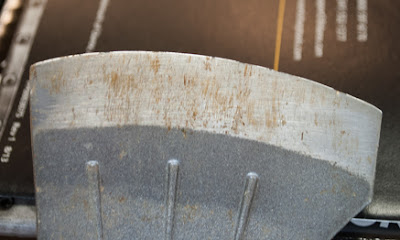If you believe George Clooney, a day without Nespresso is
day without sunshine, without oxygen, without … (insert any hyperbola you want). But has he ever wondered where all those
single-use capsules go? Maybe they are
being compressed, shrunk and crushed until they reach the density of degenerate
dwarf star material. Another rumor has
it they are taken back to Switzerland to fill in the caves the Swiss dug to
protect themselves during WWII.
Actually they are being swallowed by Victorinox and spitted
back out as a special edition of Swiss Army knives called Nespresso Pioneers
and they are very cool.
Both Victorinox and Nespresso are Swiss companies located
near each other. Victorinox is a very environmentally
conscious company. “Sustainably-sourced
and produced products are at the heart of the Victorinox business model,” says
Renee Hourigan, North American Director of Marketing for Victorinox.
So what, you say.
Companies make this claim even if they burn scrap in bonfires instead of
sending it to landfills. That may be
true but Victorinox is different. They are
recycling 600 tons of steel from its grinding sludge every year, equivalent to
25% of the steel it uses annually. So
several years ago they started making deep blue handled knives from recycled Nespresso
coffee capsules. Twenty-four recycled
Nespresso coffee capsules to be exact, per knife.
11,650 Nespresso Pioneers have were released for sale, (as a
value added activity, calculated how many cups of Nespresso George Clooney
would have to drink to supply all the aluminum) but you have to go to
Switzerland. They aren’t sold here. (Email George and see if he can do something
about this…)


But that was last year, this year 250 special purple
Nespresso Pioneers will be released in the US.
Get ‘em if you can. They are so
cool on so many levels.
In case you’re wondering about Keurig’s K-Cup coffee pods,
they were recently banned in Hamburg, Germany, with sales in North America
slumping. Keurig’s promise to make 100%
of its pods recyclable by 2020 is ‘too little, too late’ for many German and
American households that want to enjoy guilt-free coffee in the morning.

































